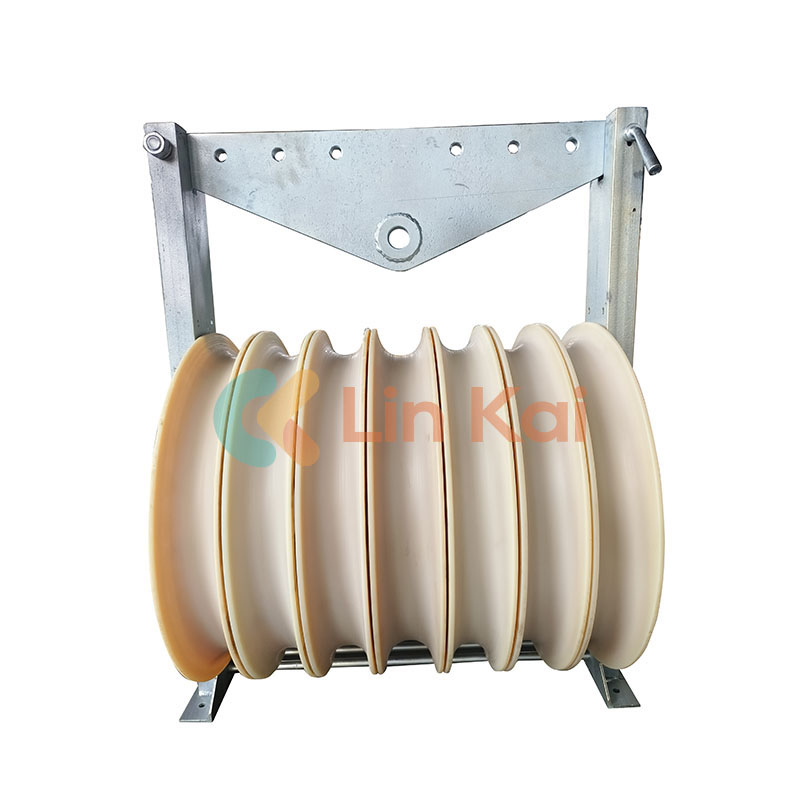Proper Cleaning and Storage of Large Diameter Stringing Blocks: A Guide for Longevity and Performance
2024-05-15
Large diameter stringing blocks are essential tools in the power line construction and maintenance industry. Ensuring their longevity and optimal performance requires diligent cleaning and proper storage. Neglecting these tasks can lead to premature wear, corrosion, and operational issues. Here’s a comprehensive guide on how to properly clean and store large diameter stringing blocks.
Cleaning Large Diameter Stringing Blocks
1. Gather Necessary Supplies
Before starting, make sure you have the following cleaning supplies:
- Soft-bristle brushes
- Clean, lint-free cloths
- Mild detergent or industrial cleaner
- Water
- Lubricant (as recommended by the manufacturer)
- Rust remover (if needed)
2. Disassemble If Possible
If your stringing blocks are designed for easy disassembly, carefully take them apart. This allows for more thorough cleaning of individual components, especially the sheaves and bearings.
3. Remove Loose Dirt and Debris
Use a soft-bristle brush to remove loose dirt, dust, and debris from the surface of the stringing blocks. Pay special attention to the sheaves and grooves, as these areas are prone to accumulating grime.
4. Clean with Mild Detergent
Mix a mild detergent with water to create a cleaning solution. Dampen a cloth with the solution and wipe down all surfaces of the stringing blocks. For tougher grime, you can use a soft-bristle brush dipped in the solution.
5. Rinse and Dry Thoroughly
After cleaning, rinse the stringing blocks with clean water to remove any detergent residue. Dry all parts thoroughly with a clean, lint-free cloth. Ensuring that all components are completely dry is crucial to prevent rust and corrosion.
6. Inspect for Damage
While cleaning, inspect each part for signs of wear, damage, or corrosion. Look for cracks, deformities, and worn bearings. If you find any damaged components, replace them before reassembling and storing the blocks.
7. Lubricate Moving Parts
Apply lubricant to the moving parts, such as bearings and sheaves, according to the manufacturer’s recommendations. Proper lubrication reduces friction and wear, ensuring smooth operation.
Storing Large Diameter Stringing Blocks
1. Choose the Right Storage Location
Store the stringing blocks in a clean, dry, and well-ventilated area. Avoid locations with high humidity, as this can promote rust and corrosion. An indoor storage facility is ideal to protect the blocks from harsh weather conditions.
2. Use Protective Covers
Cover the stringing blocks with protective covers to shield them from dust and debris. If you don’t have specialized covers, tarps or heavy-duty plastic sheets can also work. Ensure the covers are secure but allow some ventilation to prevent moisture buildup.
3. Elevate Off the Ground
Store the stringing blocks off the ground using shelves, pallets, or racks. Elevating the blocks prevents direct contact with the floor, reducing the risk of moisture exposure and potential damage.
4. Organize and Label
Organize the stringing blocks and their components systematically. Labeling each block or component can help in quickly identifying and retrieving them when needed. This practice also helps in keeping track of maintenance and usage records.
5. Regular Maintenance Checks
Even when in storage, periodically check the stringing blocks for any signs of corrosion, dust accumulation, or damage. Regular maintenance checks ensure that the blocks are ready for use whenever needed.
6. Maintain a Maintenance Log
Keep a maintenance log documenting each cleaning and inspection session. Record details such as the date, findings, and any actions taken (e.g., repairs or lubrication). This log helps in tracking the condition and maintenance history of the stringing blocks.
Conclusio
Proper cleaning and storage of large diameter stringing blocks are crucial for their longevity and performance. By following these guidelines, power line professionals can ensure that their equipment remains in top condition, ready to perform reliably during critical operations. Regular maintenance, thorough cleaning, and appropriate storage practices not only extend the life of the stringing blocks but also contribute to the overall safety and efficiency of power line construction and maintenance projects.



